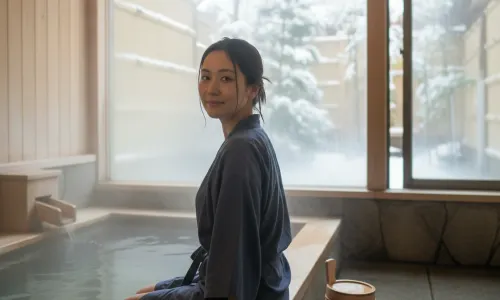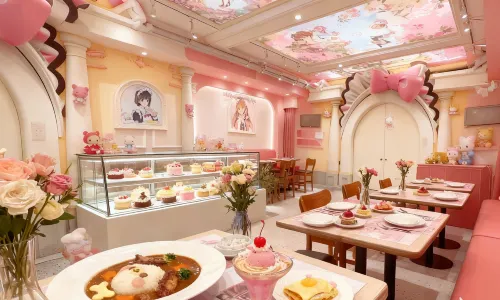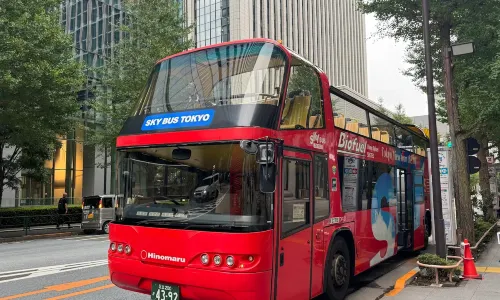Tokyo

Destinations
- Tokyo.Suidobashi/Tokyo Dome4.1 km from downtownHighlights:Discover a serene and healing oasis nestled within the bustling city.Relax in smooth mineral rich hot springs for a natural skin treatment.

 2 attraction
2 attractionNatural hot spring Heiwajima5.2
Spa LaQua4.1
- Best time to visit:Nov-DecTokyo.Shinjuku Area5.2 km from downtownHighlights:Tokyo, a city where modernity and tradition interweave, also shows its gentle and romantic side in autumn - viewing red leaves. Tokyo has a rich variety of red-leaf tree species, including Japanese maple and metasequoia. The leaves of Japanese maple are small and delicate, palm-shaped and split, and the colors are bright and eye-catching; the upright trunks of metasequoia are covered with a reddish-brown "coat", tall and solemn, and contrast with other red-leaf tree species.These red leaves are spread all over Tokyo, not only between the mountains and forests, but also integrated into every corner of the city. Walking in these streets and alleys, you can feel the heavy sense of Tokyo's history and culture, and at the same time you can appreciate the autumn beauty brought by the red leaves, which are warm and unrestrained.

 21 attraction
21 attractionKoishikawa Korakuen Garden3.5
Yoyogi Park4.7
- Tokyo.Asakusa5.6 km from downtownHighlights:Choose from furisode and komon styles with custom hairstyling.Stroll temples, shrines, and modern districts in elegant attire.

 4 attraction
4 attractionSensō-ji7.8
Ueno Park6.7
- Tokyo.Kanda3.2 km from downtownHighlights:Immerse yourself in Akihabara's unique maid culture with cute greetings and shows.Enjoy kawaii themed meals while participating in magical spell-casting activities.

 2 attraction
2 attractionAkihabara6.8
SEGA Collabocafe2.3
- Best time to visit:Nov-DecTokyo.Shinjuku Area5.2 km from downtownHighlights:Tokyo's ginkgo trees are not only famous for their beautiful appearance, but also carry the city's profound culture and history. They have witnessed Tokyo's transformation from the Edo period to a modern city and are a bridge between the past and the future. Whenever the autumn wind blows, Tokyo's streets and parks turn into a golden ocean, and the leaves of the ginkgo trees gradually turn from green to yellow, and finally bloom into a dazzling golden color, decorating Tokyo like a fairy tale world. Some of these ginkgo trees are planted alone in the courtyard, forming a sharp contrast with the surrounding modern buildings, showing a beauty that transcends time and space; others are planted in groups, forming a spectacular ginkgo forest path, attracting countless tourists and citizens to stroll and feel the tranquility and peace. In short, Tokyo Ginkgo, with its unique charm, has become an indispensable landscape in this city in autumn. It is not only a display of natural beauty, but also a microcosm of Tokyo's history and culture, allowing every visitor to feel the unique charm and style of this city.

 24 attraction
24 attractionYoyogi Park4.7
The University of Tokyo5.7
- Tokyo.Asakusa5.6 km from downtownHighlights:Ride rickshaws through historic streets reliving Edo-era atmosphere.Explore landmarks and alleys while drivers share millennium stories.

 2 attraction
2 attractionSensō-ji7.8
Ebisuya Asakusa Rickshaw3.4
- Tokyo.Ginza/Tsukiji130m from downtownHighlights:Kabuki, as a treasure of traditional Japanese art, has attracted the attention and love of countless domestic and foreign audiences with its unique performance form, gorgeous costumes, superb acting skills and profound emotional expression since its birth in the17thcentury. Kabuki performances have become an important window to showcase Japan's traditional culture. Kabuki has a wide variety of repertoires, including classic works based on ancient history, myths and legends, as well as modern repertoires that reflect the modern social landscape and explore the depth of human nature. Watching a Kabuki performance in Tokyo, you can feel the charm of Japan's traditional culture.

 3 attraction
3 attractionKabuki-za Theatre4.2
NINJA+KABUKI TOKYO4.9
- Tokyo.Shinjuku Area4.2 km from downtownHighlights:Tokyo invites you to take part in a unique cooking class, unlock the secrets of Japanese cuisine in this bustling city, and embark on a journey of authentic food creation. Exquisite course content: The course duration usually starts at 2 hours, focusing on classic Japanese dishes such as sushi, heart-warming miso soup, delicious tempura, udon noodles, ramen, and wagashi. You will learn the techniques of steaming and kneading sushi rice, master the precise heat of battering and frying tempura, and the fine details of processing various ingredients, such as the selection and slicing of sashimi ingredients, and deeply experience the delicacy of Japanese cooking. Usually, students can make 5-7 authentic Japanese dishes in one class. After the course, they can take away exclusive Japanese recipes with the chef's intimate tips, so that they can restore the delicious taste at home and continue the memory of Tokyo food. Small class teaching, professional teachers: The classes are usually small. This size can ensure that the chefs can give students sufficient guidance, and students can freely exchange experiences, inspire each other, and climb the peak of Japanese culinary skills together. All chefs are masters of Japanese cuisine with many years of practical experience. Some of them have worked in well-known Japanese restaurants or hotels, with superb skills and rich experience. The teaching adopts demonstration and practice at the same time, correcting errors while explaining, and carefully controlling the teaching process to help students improve their cooking skills. Well-equipped: The cooking area is clean and tidy, with spacious space. It is equipped with professional sushi counters, precise temperature-controlled fryers, etc. The kitchen utensils and tableware are exquisite and in Japanese style. The ingredients are fresh and seasonal, coming from high-quality suppliers in the market, such as plump tuna and soft Koshihikari rice, which inject soul into the dishes. Experience cooking courses in Tokyo, relying on exquisite courses, expert guidance, excellent facilities and meticulous teaching, to help you become a Japanese food connoisseur and leave an unforgettable impression of food.

 7 attraction
7 attractionABC Cooking Studio plus International Ginza Five Studio1.4
Cooking Sun Tokyo2.4
- Tokyo.Ryogoku3.5 km from downtownHighlights:Watch wrestlers perform sacred Shinto rituals before each powerful match.Feel the intensity up close as these giants clash in the ring.

 3 attraction
3 attractionTakasago-beya Sumo Stable2.5
Ryogoku Kokugikan National Sumo Arena3.6
- Tokyo.Tokyo Station/Nihonbashi939m from downtownHighlights:Easily enjoy countless city sights, from a sunset ride to exploring Shinjuku and Shibuya.Choose regular city tours or amazing amphibious buses that enter the water.

 2 attraction
2 attractionSky Hop Bus Tokyo6.3
TOKYO NO KABA Amphibious Bus5.5

















